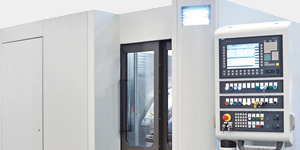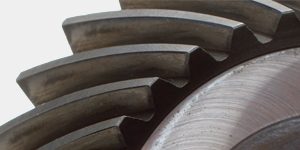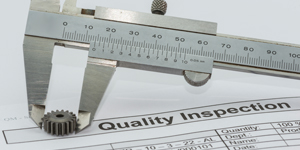≈ This is the second in a series of articles on troubleshooting issues related to heat treating steel.
In the previous column, I discussed two sources of low hardness during heat treatment, namely improper material and incorrect process. In this column, I will discuss the furnace as a source of incorrect hardness during processing.
Introduction
There are many reasons why a part can fail to meet properties. Some of these reasons are obvious, and some are quite subtle and difficult to detect. The purpose of this article is to help the heat treater understand the sources of low hardness and correct them.
In general, sources for inadequate properties can be divided into several different categories, as illustrated in Figure 1.
In the previous column, I discussed material and process as possible sources of inadequate properties (hardness and tensile properties) [1]. In this column, I will discuss the effect of the furnace on achieving proper hardness.
Furnace
There are multiple sources of poor properties that are related to the furnace. These are temperature, temperature uniformity, incorrect soaking time, or poor atmosphere control. A variation of any of these parameters can result in poor properties, or non-uniform heat-treating response.

Temperature and accuracy of thermocouples
Detailed specifications for heat treating a given steel are often provided in many different books [2], and process specifications such as AMS 2759 [3]. In general, the part is heated to approximately 25-50°F (14-27°C) above the A3 temperature on the phase diagram in the austenite phase field for the alloy. If the furnace operates below the required temperature, the steel may not fully austenitize, leaving ferrite or pearlite untransformed. When quenched, these untransformed regions remain softer, reducing overall hardness and tensile strength. Overheating can cause excessive grain growth, which can increase hardenability, but reduce impact strength.
To achieve the desired temperature, accurate thermocouples are required. The accuracy required from thermocouples is typically between 5 to 10°C, an accuracy of ± 0.5% to ± 1.0% of reading [4]. However, these thermocouples can degrade over time. These thermocouples must be either replaced at routine intervals, or recalibrated. Typically, recalibration is performed quarterly. Recalibration is necessary to ensure that accurate readings are provided by the thermocouple. The temperature controller calibration should also be verified at quarterly intervals. Should the process controller (and excess temperature controller) fail calibration, it should be either replaced or recalibrated. Calibration of the process controller and the thermocouples is commonly known as the System Accuracy Test.
Temperature Uniformity
The temperature uniformity within a furnace work zone is very important. Should some areas of the work zone be hotter or cooler than the rest of the work zone, then parts may experience uneven heating. To measure the temperature uniformity of the furnace, a series of thermocouples are placed throughout the work zone [5]. The number of thermocouples required is based on the volume of the work zone. For most common industrial furnaces, nine thermocouples are used — one in each corner of the work zone, and one thermocouple placed in the geometrical center of the work zone [4] [6]. An example of a rack used for a temperature uniformity survey (TUS) for a vacuum furnace is shown in Figure 2.

Soak Time (Time at Temperature)
The soak time is the time that the part is held at the desired temperature. Historically, this has been measured from the time that the furnace recovers to the process temperature, or in the case of part thermocouples, from the time the part reaches the target temperature (within some tolerance).
One guideline that is typically used is the rule-of-thumb “one hour per inch of thickness.” This guideline is generally conservative and will provide adequate soaking time for the part to heat to the desired temperature and complete transformation. This soaking time allows the thick and thin sections to equilibrate in temperature and achieve a uniform temperature. Should the soak temperature be too short, incomplete transformation could occur, leading to a low harness. The microstructure would consist of ferrite and islands of martensite. Conversely, excessive soak time can cause grain coarsening, which can increase hardenability, creating the potential of quench cracking.
Atmosphere Control
With improper atmosphere control, either decarburization or carburization of the part surface can occur. Decarburization of steel is the depletion of carbon from the surface of steel, and carburization is the addition of carbon to the surface of the steel. Either of these situations can produce incorrect hardness readings. It is always recommended, when consistently higher or lower hardnesses be obtained, to section a part and examine it metallographically for either decarburization or carburization.
Decarburization or carburization is generally the result of either surface contamination (residual coolant or cleaner residue), or improper CO/CO2 ratios. Verification of the atmosphere using a three-gas analyzer is recommended.
Conclusion
In this column, I have discussed some of the issues related to the furnace that can result in inadequate or improper hardness in heat-treated steel parts. In the next column, I will discuss issues related to quenching.
Should you have any comments or questions regarding this article, or suggestions for further articles, please contact the writer or editor.
References
- A. K. Zois, “Heat Treatment of Steel: Measurement of hardness and tensile strength,” Thermal Processing, vol. 12, no. December, pp. 31-34, 2022.
- American Society for Metals, Heat Treaters Guide Standard Practice and Procedures for Steel, Metals Park, OH: ASM International, 1982, pp. 423-426.
- SAE International, AMS 2759G, Heat Treatment of Steel Parts, General Requirements, Warrendale, PA: SAE International, 2018.
- SAE International, “AMS 2750H Pyrometry,” SAE International, Warren, OH, 2024.
- J. Grann, “Maintenance Matters: Performing a Temperature Uniformity Survey,” Thermal Processing, no. May, pp. 18-19, 2017.
- AIAG, “CQI-9: Special Process: Heat Treat System Assessment, 4th Edition,” AIAG, Southfield, MI, 2020.
- W. R. Jones and R. J. Fradette, “Vacuum Furnace Reference Series No. 2: Optimizing Procedures for Temperature Uniformity Surveying of Vacuum Furnace,” Solar Atmospheres, Inc. & Solar Manufacturing, Inc., Souderton, PA, 2011.























